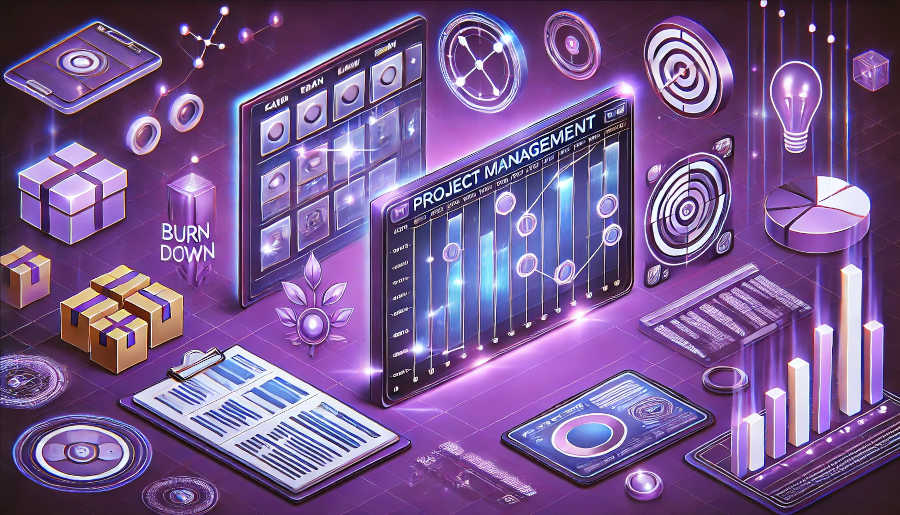Misunderstanding 1: The Stand-up Meeting is a Status Update Meeting
One of the most prevalent misconceptions is that the stand-up meeting is merely a time for team members to report their work status. While sharing what was done yesterday, what will be done today, and any obstacles encountered is part of the meeting, reducing it to a simple status update misses the bigger picture.
The stand-up meeting is not just about information sharing; it's about fostering a sense of collective responsibility and collaboration. When team members focus solely on status, the meeting can become a passive exercise where individuals take turns speaking without much interaction. In reality, the stand-up should be a dynamic forum where team members can engage with each other, offer support, and identify opportunities for improvement. For example, if a team member mentions an obstacle, instead of just noting it, others can immediately offer suggestions or resources to help overcome it. This collaborative aspect is what truly differentiates the stand-up meeting from a traditional status update.
Moreover, viewing the stand-up as a status update can lead to a lack of depth in discussions. Team members may rush through their updates, providing only surface-level information. The stand-up should encourage a more in-depth exploration of issues. For instance, if a task is behind schedule, rather than just stating the fact, the team can briefly discuss the root causes during the meeting. This deeper analysis can help prevent similar issues in the future and drive the project forward more effectively.
In essence, the stand-up meeting is a platform for the team to come together, align their efforts, and work towards a common goal. It's not about checking off boxes on a status report but about actively collaborating to solve problems and make progress.
Misunderstanding 2: The Stand-up Meeting Should Be a Long and Detailed Discussion
Another common fallacy is the belief that the stand-up meeting needs to be a long and in-depth discussion. Given its name, the stand-up meeting is intended to be short and to the point. The typical duration is around 15 minutes, and this time constraint is not arbitrary.
A long stand-up meeting can quickly become counterproductive. Team members may lose focus, and the sense of urgency that the stand-up is meant to instill can be lost. When the meeting drags on, it can also encroach on valuable work time. For example, if a team spends an hour in a stand-up meeting every day, that's a significant portion of the working day that could be dedicated to actual project tasks.

The key to a successful stand-up is brevity. Each team member should be able to share their updates concisely. This requires preparation. Before the meeting, team members should have a clear idea of what they want to say. They should focus on the most important aspects of their work, such as significant achievements, critical tasks for the day, and any blockers that are impeding progress. By keeping the statements short and relevant, the team can ensure that the meeting stays within the allotted time.
In addition, the stand-up meeting is not the place for in-depth problem-solving. While it's appropriate to mention obstacles, detailed discussions about solutions should be scheduled for a separate meeting. This separation of concerns helps keep the stand-up focused and efficient, allowing the team to start their workday promptly after the meeting.
Misunderstanding 3: The Stand-up Meeting is Only for Developers
Some teams wrongly assume that the stand-up meeting is exclusive to developers. In an Agile environment, the stand-up is a cross-functional meeting that should involve all stakeholders who are actively involved in the project.
This includes not only developers but also product owners, testers, designers, and any other team members who contribute to the project's success. The product owner, for example, can provide valuable insights into the project's goals and priorities. They can share any changes in the product requirements or market feedback that the team needs to be aware of. This input helps the developers and other team members align their work with the overall product vision.
Testers also play a crucial role in the stand-up meeting. They can report on the status of testing, any bugs or issues they have encountered, and how these may impact the project timeline. Designers can share their progress on user interface or user experience design, and how their work is integrating with the development efforts. By including all these stakeholders, the stand-up meeting becomes a comprehensive platform for communication.
Excluding certain team members from the stand-up can lead to silos within the team. Information may not be shared effectively, resulting in misunderstandings and inefficiencies. For example, if the product owner is not present, the developers may be working on features that are no longer a priority. Or if the testers are left out, the developers may not be aware of critical bugs that need to be addressed immediately.
In conclusion, Agile stand-up meetings are a powerful tool for enhancing team collaboration and project progress. However, to fully realize their potential, it's essential to dispel common misunderstandings. By understanding that the stand-up is not just a status update meeting, that it should be short and focused, and that it is inclusive of all relevant stakeholders, teams can transform these daily gatherings into effective communication and collaboration hubs. This, in turn, will lead to more efficient project execution, better problem-solving, and ultimately, greater project success. Teams should continuously reflect on their stand-up meeting practices, identify areas for improvement, and make adjustments to ensure that they are getting the most out of this valuable Agile ritual. By doing so, they can create a more cohesive and productive work environment where everyone is working towards a common goal with clarity and purpose.
ARTICLE TITLE :3 common misunderstandings and clarifications of Agile stand-up meetings ,AUTHOR :ITpmlib

















